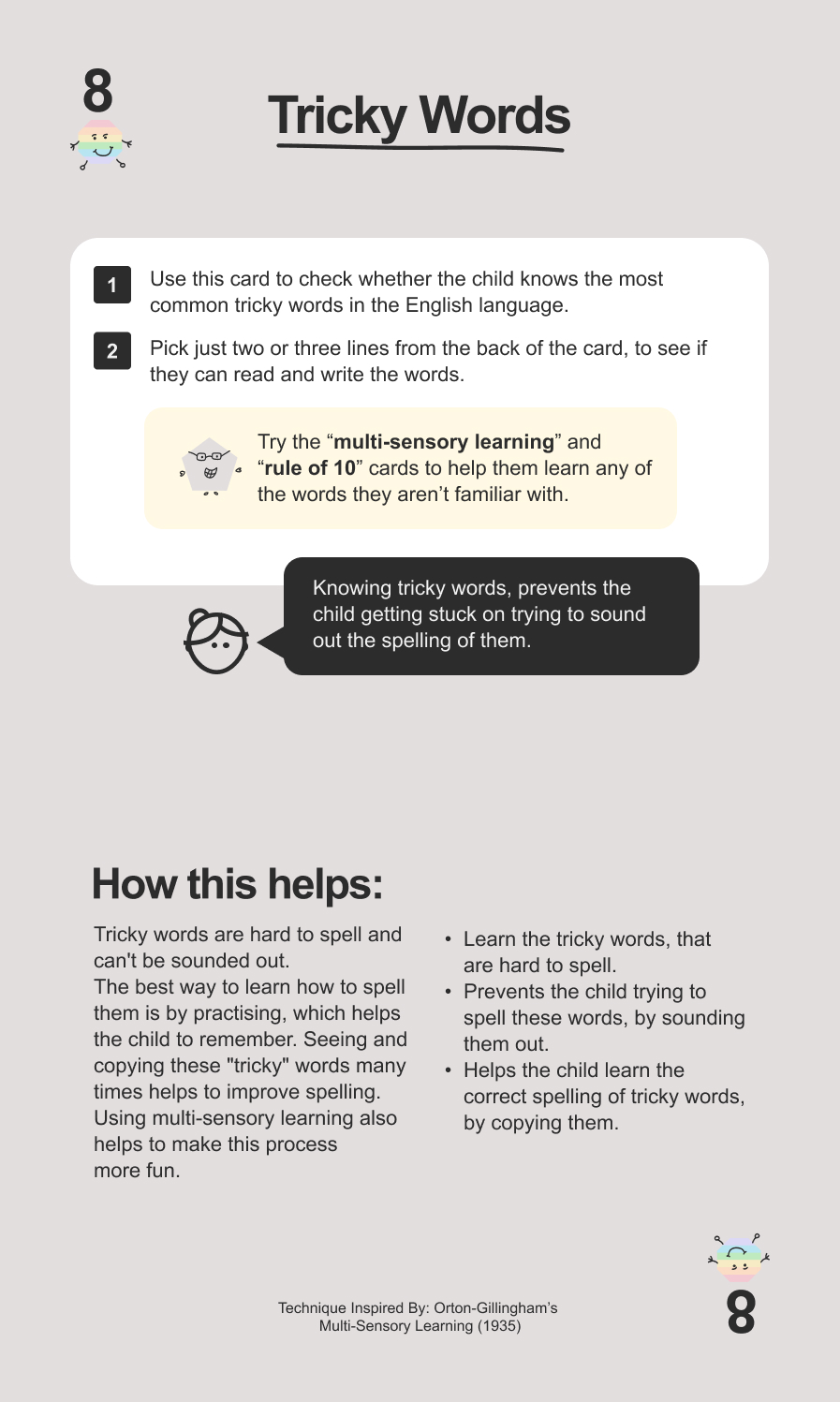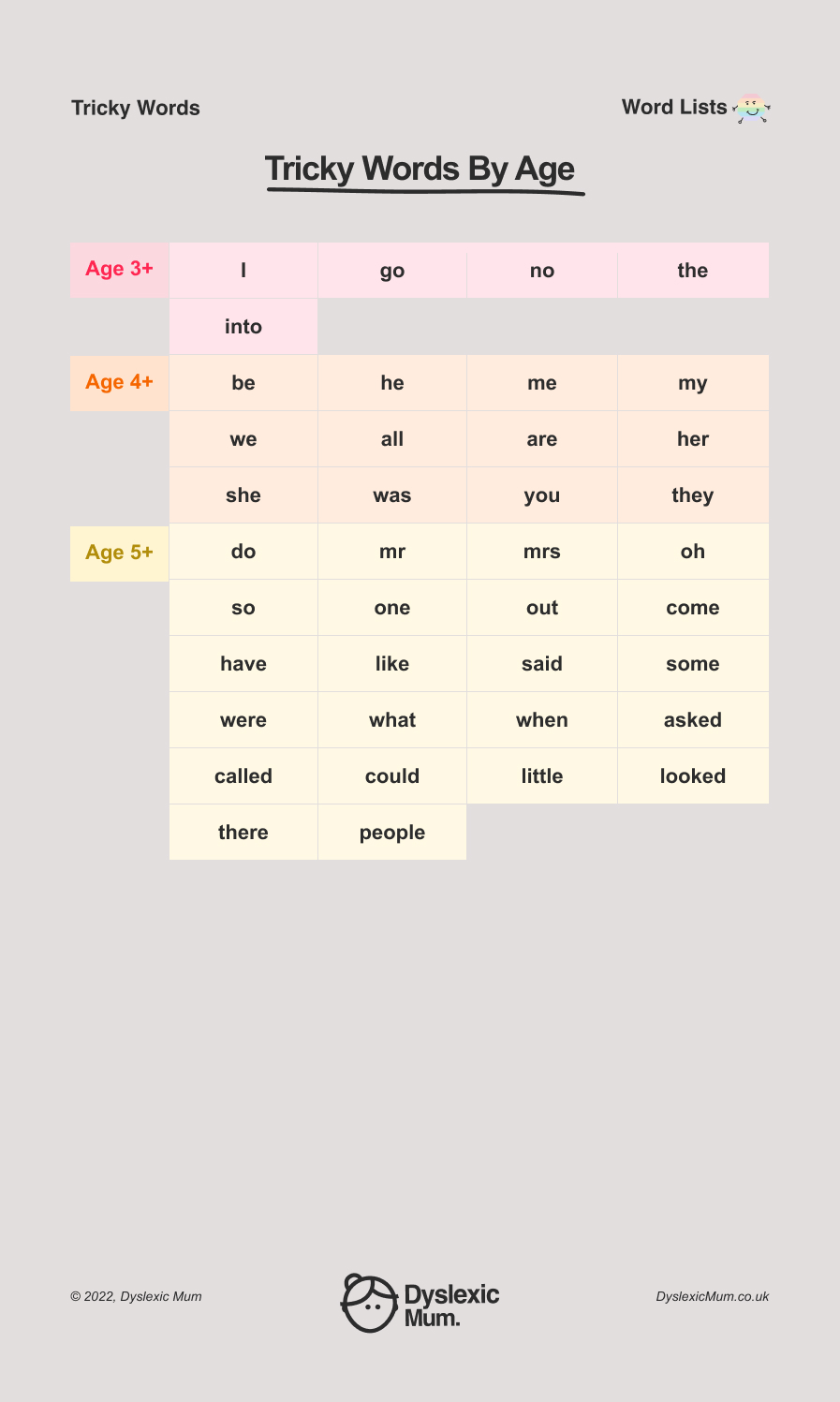Your basket is currently empty!
Discover a list of the 50 hardest words that dyslexic children struggle to spell. Hard words to spell are often called tricky words and all have in common that they are difficult to sound out using phonics methods.
A non-tricky word such as “Cat”, can be sounded out as “C-A-T”. Tricky words, such as “T-H-E” when sounded out, sound like a different word. So the word can not be read or spelled by the child, by sounding out the letters.
The only way the tricky words can spelled or read, is if a child remembers the letters in the word in the correct order. Committing this into their long term memory. Dyslexic children struggle with memory and order, so find it hard to learn spellings. They can need to learn how to read and write a word up to 10 before they remember it. Using dyslexic friendly teaching methods such a multi-sensory learning.
Tricky Words List Card
Get a list of the hardest words dyslexic children struggle to spell by age. Use the ‘Tricky Words’ card from Mooki Cards. This card is based scientific research, learn more “Phoneme-grapheme correspondences”.


Hard words for dyslexic kids
Get advice from the Dyslexic Mum below about words that are difficult for dyslexic children to spell and how to best teach them:
“Tricky words are often on childs weekly school spelling test. She struggles to spell these words because, the spellings of tricky words, can not be “sounded” out. The only way to spell them is to remember the letters in the correct order.
My childs is dyslexic, so she struggles with memory and order. This means tricky words are even trickier for her to spell. We practise by learning only one word each night, using the “Rule of 10 Card” from my Dyslexic Mum kit.”
Clickable video below features the Dyslexic Mum discussing what words are hardest for dyslexic children to spell.
When using the ‘Tricky Words’ card above follow the top tips from the Dyslexic Mum below:
- Learn 1 Word – Practise learning just 1 tricky word with the child, daily or weekly. Keep practising until they are confident in spelling, reading and writing the word. Do this before moving onto learning a new word, to avoid overwhelming the child.
- Breaks Between Learning – It can take time for the dyslexic mind to process new information. Give the child a day or two, between practising a new word and testing to see if they remember it.
- Multi-Sensory Learning – Dyslexic children can need to learn new information ten times. Make learning more fun and less repetitive using dyslexia friendly “Multi-sensory Learning”.
Further references: “The validity of teacher judgements using ‘phonic phases’”.
Everything you need to help a dyslexic child. 56 cards with 10 minute activities. Perfect for using at home or in the classroom. Order your “Mooki Cards” here!

